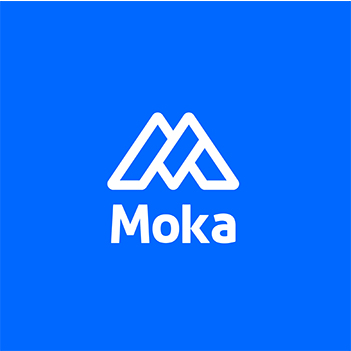5 Proven Ways to Optimize Your Hiring Process and Turn Recruitment into a Growth Driver
01|Why Are We Still Struggling to Hire and Retain, Despite Constant Recruitment?
It’s the first week after the Lunar New Year break, and HR’s phone is already blowing up.
The operations manager calls: “Did you fill that role you promised before the holidays? The e-commerce channel position is delaying our progress.” The tech lead rings next: “If we can’t hire a test engineer this month, our team is going to collapse.”
You open your ATS to review resumes, frustrated: “Aren’t we constantly hiring? Why does the business think HR isn’t doing anything?”
Sound familiar?
Recruitment feels like a game of whack-a-mole—fill one role, another opens;
Hiring managers complain that you're “too slow,” but hundreds of resumes are irrelevant;
Interviews are arranged but canceled last minute by business teams;
Offers are sent, only for candidates to ghost you overnight.
Yes, we are hiring. But recruitment is rarely treated systematically. It’s often reactive firefighting—not the strategic starting point it should be.
This article explores how HR can truly optimize the hiring process and make recruitment a growth ignition point.
02|Recruitment Isn’t Just Hiring People—It’s About Hiring People Who Stay and Grow
It’s not about a lack of candidates—it’s a lack of the right people who solve problems.
Many times, HR fills roles, yet business still feels unsupported. Why?
Poor candidate profiles that don’t match job needs;
Gut-feel interviews with no structured evaluation;
No talent pipeline—recruitment only starts when panic sets in;
Delayed feedback, causing strong candidates to drop off;
New hires quit quickly due to poor job fit.
Recruitment isn’t just about “plugging holes.” It’s about boosting organizational effectiveness. Hiring the right people directly impacts project speed, team morale, and growth capabilities.
03|Step One: Break Free from “Reactive Task-Driven” Thinking
Many HR teams follow a “transactional” approach—receive a headcount request, post a JD, and start filtering resumes.
This feels productive, but it lacks strategic value.
It’s time to shift from reactive hiring to proactive talent planning. If you’re always waiting for requisitions, you’ll always be behind. Great HR is ahead of the curve.
04|5 Must-Optimize Stages of the Recruitment Process for HR
1. Job Analysis & Candidate Profiling: Stop Using Generic JDs
Most job descriptions are copy-paste clichés: “Strong communication, pressure handling, team spirit.” But the business usually has a very different standard.
🔧 Actionable Tips:
Interview hiring managers: What are the role’s key outcomes? What defines success after 12 months?
Identify hard + soft skills using behavioral criteria like “led e-commerce sales growth” or “independently managed live-stream analytics.”
Create structured candidate profiles for consistent filtering and interviewing.
2. Channel Strategy & Employer Branding: It’s Not Just About Posting Jobs
Posting JDs and waiting isn’t enough. Candidates—especially younger ones—are researching you on your website, Xiaohongshu, and job review platforms.
🔧 Actionable Tips:
Segment your sourcing: blue-collar via offline/BOSS Zhipin; mid-level via platforms/referrals; senior via headhunters/networks.
Don’t ignore storytelling: beyond the JD, share team culture, role challenges, and achievements.
Build employer brand content: videos, employee stories, internal mobility success—anything that creates emotional connection and trust.
3. Structured Interviews: Don’t Say “They Seem Fine”
The worst interview feedback HR can receive is: “They seem okay.” What does “okay” mean?
🔧 Actionable Tips:
Provide behavior-based question banks tailored to each role.
Use structured scorecards across dimensions like communication, pressure handling, learning, execution.
Enable multi-evaluator decisions with HR’s oversight to avoid bias.

4. Post-Offer Engagement: Don’t Let Candidates Disappear After Signing
Candidates ghosting after signing is common. HR gets ignored, and on the start date, they vanish.
🔧 Actionable Tips:
Begin post-offer engagement immediately:
Send weekly welcome messages;
Add them to team chat groups;
Share onboarding guides;
Assign a buddy or mentor in advance.
Confirm attendance via phone a few days before joining.
5. Probation Tracking: Hiring Doesn’t End on Day One
The probation period is a make-or-break phase. New hires might seem excited but quit after three months—often due to lack of clarity, guidance, or support.
🔧 Actionable Tips:
Use a 30/60/90-day onboarding plan with clear goals and milestones.
Conduct regular check-ins, especially at the 30-day mark.
Send short surveys to gauge satisfaction and catch early warning signs.
05|Three “Weapons” That Power Scalable Recruitment
✅ Tools & Standardization
Build a talent database—even in Excel.
Use scorecards, interview logs, and review templates for consistency.
✅ Data-Driven Hiring
Track key metrics: time-to-fill, candidate pass rates, probation pass rates, ROI by channel.
Run monthly retrospectives to identify gaps and optimize.
✅ Cross-Team Collaboration
Co-own hiring processes with business teams.
Launch internal referral programs.
Share recruitment KPIs with HRBPs and business interviewers.
06|In Closing: Recruitment is the First Line of Business Growth
Recruitment isn’t about “filling headcount.” It’s about fueling the business.
It’s not “you want people, I’ll find them”—it’s “I know exactly what kind of people we need, when we need them, how to attract them, evaluate them, and retain them.”
Great HR doesn’t treat recruitment as a task—they treat it as a strategic engine.
With the help of tools like MokaHR, you can plan ahead, define roles precisely, filter candidates efficiently, assess scientifically, and follow through—turning talent into business momentum.
You’re not just hiring “people,” you’re hiring impact.
So the next time you think “I need to improve the hiring process,” don’t just change a JD or interview time.
Start by understanding your business goals, defining role profiles, and mapping the entire recruitment journey.
From recruiting candidates to onboarding new team members, MokaHR gives your company everything you need to be great at hiring.
Subscribe for more information

